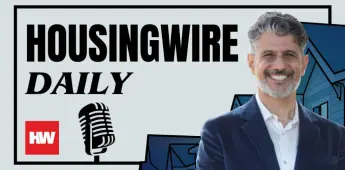Fannie Mae
The Federal National Mortgage Association, or as it’s more commonly known as, Fannie Mae, has a history that dates back to the Great Depression in the 1930s. Established by the U.S. Congress in 1938, the enterprise was born out of a need for more financial security in the housing market after the Great Depression resulted in a surge of foreclosures. The National Housing Act of 1934, which established the Federal Housing Administration (“FHA”) and the Federal Savings and Loan Insurance Corporation, was amended in 1938 to not only create Fannie Mae but also Fannie’s counterpart, the Federal Home Loan Mortgage Corporation, better known as Freddie Mac.
Fast forward to 2008 and the two enterprises were forced into the spotlight again during the Great Recession. Between an increasing number of people getting mortgages with little to no credit, a fast-growing supply of vacant homes on the market from borrowers going into default and many other factors that collided together, America’s economy was in trouble and Fannie Mae and Freddie Mac were at the center of it. In the aftermath of this, the United States government stepped in and put the enterprises under conservatorship, which is how they still operate today, acting now as government-sponsored enterprises.
In today’s market, Fannie Mae buys and guarantees mortgages, working with lenders in the secondary market, meaning they don’t actually originate or service the mortgages. Overseen by the Federal Housing Finance Agency, which was created in 2008 to supervise the two enterprises, Fannie Mae now operates to ensure the availability of affordable mortgage loans and maintain the 30-year, fixed-rate mortgage.
While talks heightened under the Trump Administration to remove both GSEs from conservatorship, the Biden Administration has shown no interest in continuing down that road. Instead, the current acting director, Sandra Thompson, is focused on achieving greater affordability in the housing market, expanding access to credit in underserved communities, fair lending and safety and soundness in the housing space.
Latest Posts
Congressional report finds Invitation Homes downplayed evictions to Fannie Mae
Jul 29, 2022A congressional subcommittee found that from March 2020 to July 2021, as many as 29% of Invitation Homes’ eviction cases resulted in the tenant ultimately losing their housing — a rate more than four times higher than the rate it represented to Fannie Mae.
-
Cost cutting is the top priority for mortgage lenders
Jul 29, 2022 -
Fannie Mae hauls in $4.7B net income for Q2 2022
Jul 29, 2022 -
The nation’s housing market is on a correction course
Jul 25, 2022 -
GSEs bolster diversity with senior hires
Jul 22, 2022 -
Fannie Mae notches two more CIRT deals
Jul 22, 2022 -
Sandra Thompson tight-lipped on credit score changes, ending GSE conservatorships
Jul 20, 2022 -
Opinion: Is it time to bring Fannie and Freddie out of conservatorship?
Jul 20, 2022 -
FHFA opens fintech office and seeks feedback on mortgage fintech
Jul 19, 2022 -
MSR market picks up in Q3 where Q2 left off: Hot
Jul 15, 2022 -
Manufactured housing’s trek toward acceptance
Jul 13, 2022 -
The hybrid appraisal is here. Who benefits?
Jul 12, 2022









